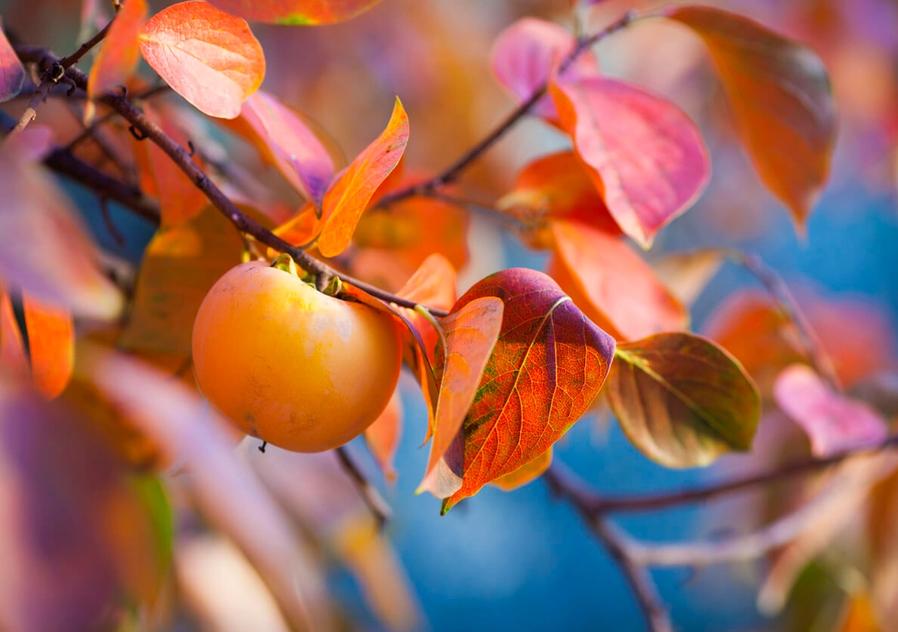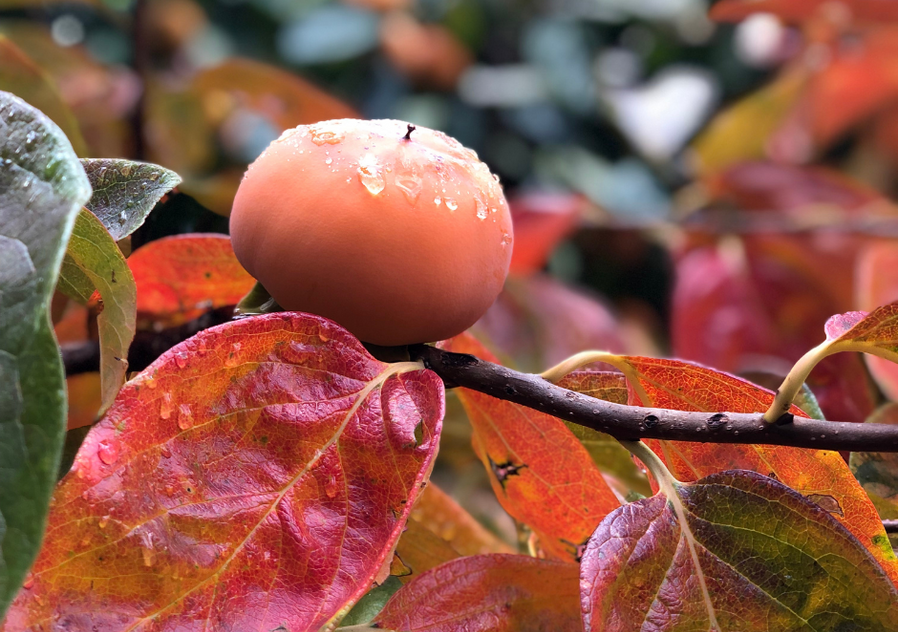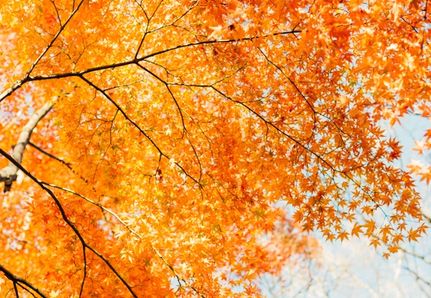Our Top 5 Autumn Trees
March heralds the start of autumn and one of the most stunning signs of autumn is the turning of the leaves. During winter there is not enough sunlight for photosynthesis to occur, so as the days shorten throughout autumn, the trees prepare by reducing the amount of chlorophyll in their leaves.
As the chlorophyll (which makes tree leaves green) declines, other chemicals in the leaves become more prominent. These chemicals (types of flavonoids, carotenoids and anthocyanins) are responsible for the vibrant ambers, reds and yellows of autumn!
Now that we know the fun facts behind our stunning autumn leave colours, here’s our top 5 autumn trees you may want to consider for your garden.
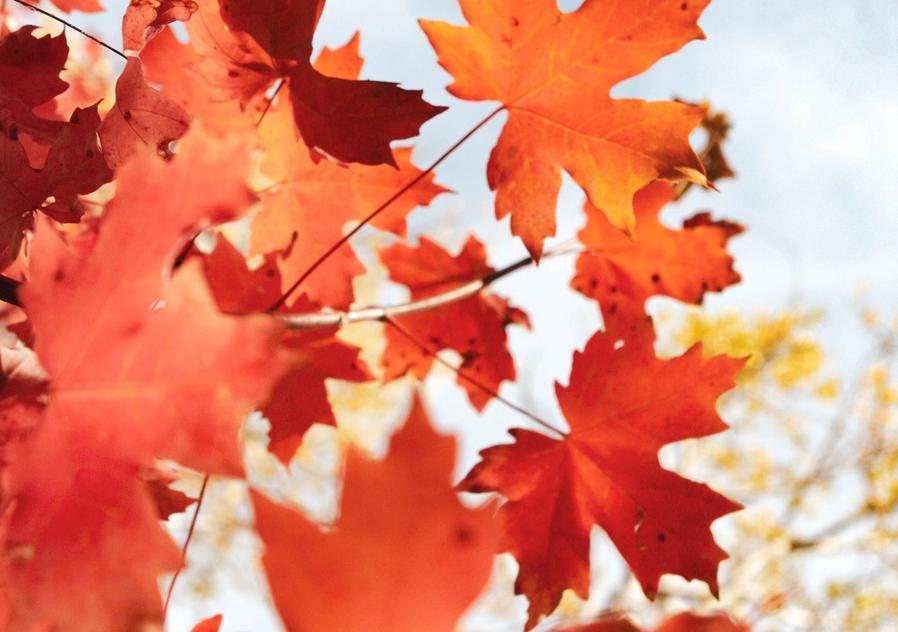
Japanese Maple (Acer palmatum)
Planting a Japanese maple tree in your garden traditionally symbolises the “welcoming of autumn as a friend”.
Native to Japan, they have been cultivated in the West since the 1800s and are known for their interesting foliage in any season.
Most Japanese Maples prefer protected sites in the garden away from the hot afternoon sun. They are particularly unhappy when hit by hot northerly winds in summer. The leaves will burn. Don’t worry if this happens, the leaves will usually come back but it’s not a great look. A nice shady nook in the garden or a sheltered courtyard on the south side of the house is the perfect place for a Japanese Maple.
Some of our favourite cultivars are Acer ‘Osakazuki’ and Acer dissectum ‘Seiryu’. Both are available from Fleming’s Nurseries.
In the spring, the Japanese maple’s new leaves emerge in a bright vibrant green and in autumn they put on a brilliant display of colours ranging from red, green, yellow, maroon or purple.
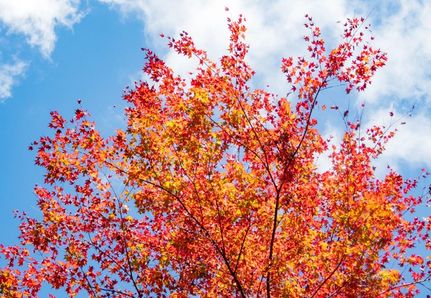
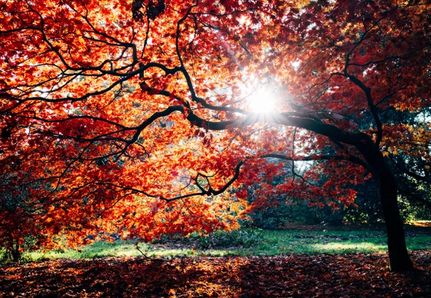

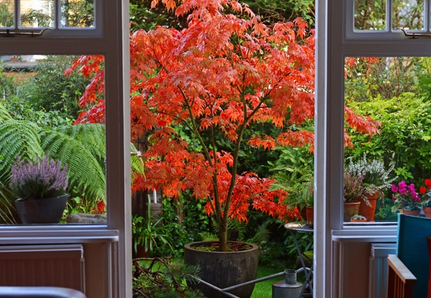
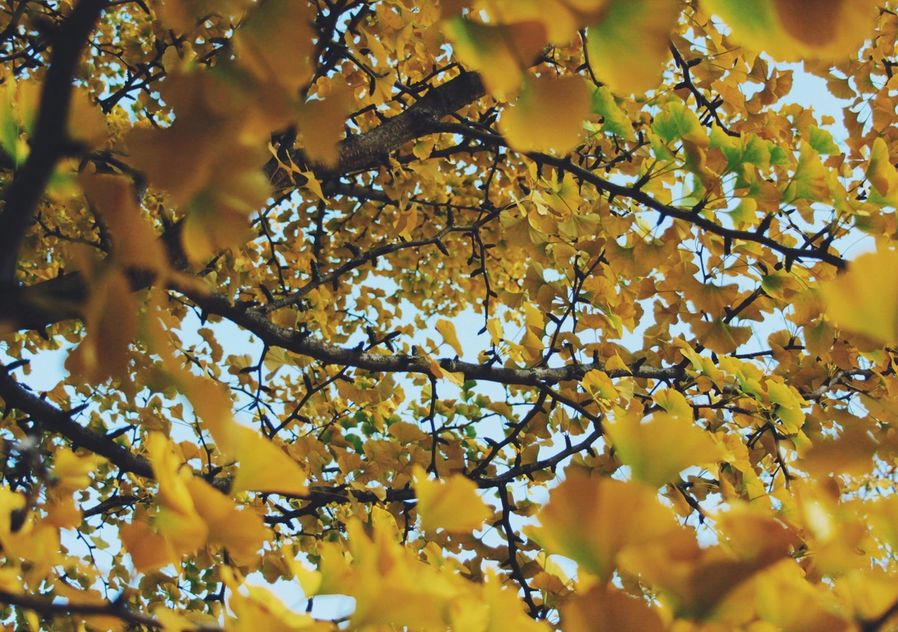
Ginkgo (Ginkgo biloba)
From a Japanese Maple to a native from China, the Ginkgo biloba. A slow growing and long-lived, deciduous tree, the Ginkgo is also commonly known as a maidenhair tree as its leaves resemble a maidenhair fern. Considered quite an ancient tree, it is known to have origins dating back to Jurassic times and is often referred to as a ‘living fossil’.
Ginkgo is a slow growing tree but it’s tall, erect habit makes it the perfect shape for narrow garden beds. Ginkgo Trees have been thriving for decades alongside busy motorways in Tokyo suggesting that it’s incredibly tolerant of difficult conditions.
An autumn masterpiece, the Gingko biloba branches hold uniquely fan-shaped, double-lobed foliage which turn from a vibrant green to golden yellow, before shedding entirely in late autumn-early winter. Before the whole leaf turns golden, there is sometimes a stage during which the leaf is two-toned, with separate bands of gold and green.
Interestingly, fruit forms on female Ginkgo tree (which stinks) and that is why only male trees are planted by those who plant it for ornamental purpose.
Hailed as one of the most distinct and beautiful of all deciduous trees, the ginkgo certainly makes a statement every autumn.
Betchel crabapple (Malus ioensis 'Plena')
Perhaps most famous for the stunning double pink, fragrant blooms of spring, in autumn the Bechtel Crab’s foliage colours to a burnt orange to red. Such a showstopper and perfect for changing up the look of your garden throughout the year just by the seasons changing!
Another stunning small tree that prefers a protected position in the garden. Avoid planting in highly exposed sites that receive full sun and strong winds. The Crabapple will look its best in a protected site with plenty of organic matter added to the soil.
Discovered in Staunton Illinois by E. A. Bechtel and introduced into gardens between 1840 and 1850, these ornamental trees require very little maintenance and are a good option for small to medium landscape projects or where space is limited.
A small, deciduous tree that makes an excellent addition to brighten anyone’s landscape.

Forest Pansy (Cercis)
The Forest Pansy is known for its large heart-shaped leaves that change colour throughout the year.
From a deep reddish-purple in spring, the foliage changes to green over summer, followed by a multi-coloured and spectacular autumn display in tones of red, apricot and gold. eye-catching shade of purple in spring, to purplish-black in summer, then to glowing yellow-orange in autumn.
With rose pink, pea-like flowers that grow in clusters in early spring makes a stunning colourful addition to any garden and, it’s suitable gardens small or large.
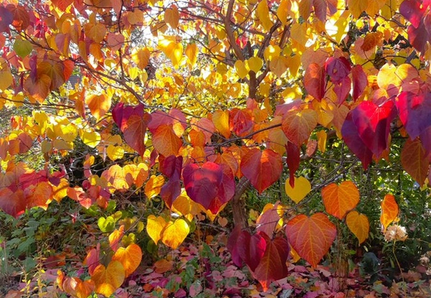
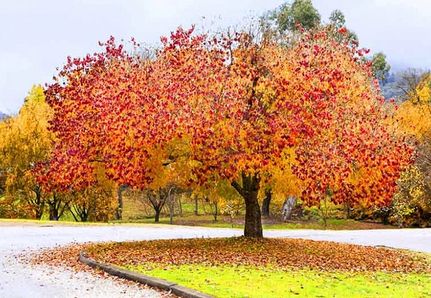


Persimmon (Diospyros kaki)
This is perhaps the most underrated tree (and fruit) we know of. It’s just a matter of time before the humble Persimmon becomes the new darling of the foodie world.
Provide Persimmon’s with good watering and free draining soil and you will be rewarded with the most perfectly shaped small canopy tree you’ve ever seen.
There are two types of Persimmon fruit to choose from. The non-astringent varieties, which have a hard, apple-like flesh and the astringent varieties which have a soft jelly-like flesh. We prefer the crisp fruited non-astringent fruit and this tends to be the type you’ll find in your local supermarket.
